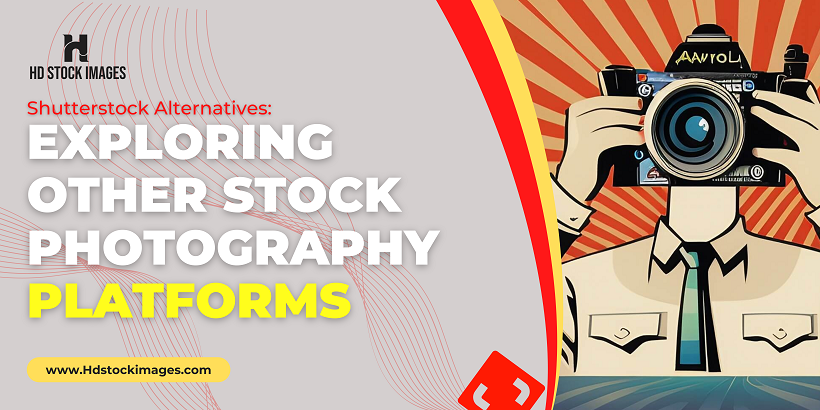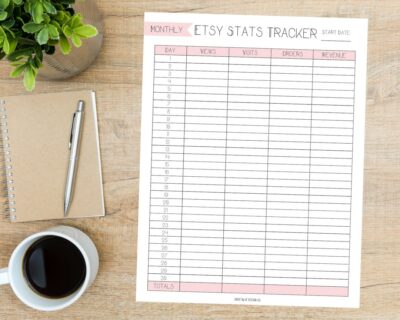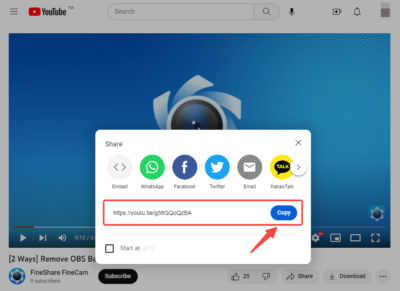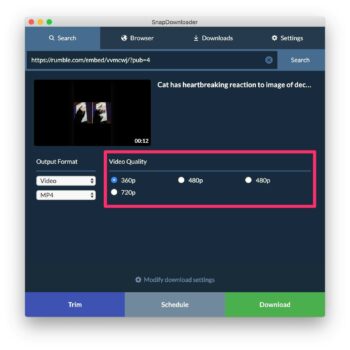1. Introduction
In today's digital age, visuals play a crucial role in capturing attention and conveying messages effectively. As content creators, marketers, and designers, we rely heavily on stock photography platforms to source images for our projects. Shutterstock, undoubtedly, has been a go-to choice for many, offering a vast collection of images, videos, and music. However, as the stock photography landscape evolves, it's essential to explore other alternatives that can provide fresh, diverse, and unique content.
This blog post aims to take you on a journey beyond Shutterstock, delving into several other stock photography platforms that deserve recognition. Whether you seek high-quality images on a budget, crave creative freedom, or simply want to discover hidden gems, there are numerous platforms that could fulfill your requirements.
Also Read This: How to Use Estockphoto to Improve Your SEO
2. Why Consider Alternatives to Shutterstock?

While Shutterstock is a popular and widely used stock photography platform, there are several reasons why you might want to consider exploring alternatives:
Pricing Model and Subscription Plans: Shutterstock's pricing structure may not be suitable for everyone. Its subscription plans can be expensive for those with limited budgets or infrequent image needs. Alternatives may offer more affordable pricing options or even provide free access to high-quality content.
Limitations in Selection and Diversity: While Shutterstock boasts a vast collection, it may still fall short in terms of niche or specific content requirements. Depending on your industry or project, you might find that alternative platforms offer a wider range of images that better align with your needs, ensuring uniqueness and relevance.
Copyright and Licensing Concerns: While Shutterstock ensures proper licensing and usage rights for its images, some users have encountered copyright issues or licensing restrictions with certain images. Exploring alternative platforms can provide a fresh perspective on licensing terms and potentially offer more transparent and user-friendly policies.
Desire for Unique and Lesser-Known Content: If you're looking for visuals that stand out from the crowd, alternatives to Shutterstock can be a treasure trove of hidden gems. These platforms often feature contributions from up-and-coming photographers, artists, and content creators, offering a unique and diverse selection that may not be found on more mainstream platforms.
By considering alternatives to Shutterstock, you can potentially overcome pricing barriers, access a wider range of content, address licensing concerns, and discover fresh and distinctive visuals for your projects. The next section will delve into some of the top alternatives that can broaden your stock photography horizons.ent
Also Read This: Imago Images: The Best Stock Photo Agency for Businesses
3. Top Alternatives to Shutterstock

A. Unsplash
- Overview of Unsplash's free high-quality image collection: Unsplash is a popular platform known for its vast collection of high-resolution, royalty-free images contributed by a generous community of photographers. It offers a wide range of diverse visuals suitable for various creative projects.
- License and usage rights clarification: Unsplash follows the Creative Commons Zero (CC0) license, which allows you to use, modify, and distribute the images without attribution. However, it's always a good practice to credit the photographers when possible.
- Community-driven platform benefits: Unsplash's community-driven approach fosters a collaborative environment where photographers share their work and gain exposure. It's an excellent platform for discovering emerging talent and supporting fellow creatives.
B. Pixabay
- Extensive library of free images, videos, and music: Pixabay offers an extensive collection of high-quality images, videos, and even royalty-free music. It covers a wide range of topics and styles, catering to diverse project needs.
- Guidelines on using Pixabay's content appropriately: Pixabay's content is released under the Creative Commons CC0 license, allowing for unrestricted use. However, it's essential to familiarize yourself with any specific usage guidelines or restrictions for individual assets.
- Comparing Pixabay's offerings to Shutterstock's: Pixabay can be a great alternative to Shutterstock, particularly for those seeking free or cost-effective options without compromising on quality.
C. Adobe Stock
- Integration with Creative Cloud applications: Adobe Stock seamlessly integrates with Adobe Creative Cloud applications like Photoshop, Illustrator, and InDesign. This integration streamlines your workflow, allowing you to search, license, and use images directly within the Adobe software ecosystem.
- Diverse collection of premium images and templates: Adobe Stock offers a vast collection of premium, high-quality images, illustrations, vectors, and templates. It provides a range of content options suitable for professional projects across various industries.
- Subscription plans and pricing comparison: Adobe Stock offers flexible subscription plans to accommodate different needs and budgets. It's worth comparing their pricing structure with Shutterstock's to determine the most cost-effective option for your specific requirements.
D. Pexels
- Free stock photo and video platform overview: Pexels is another popular platform that provides free stock photos and videos. It features a vast collection of high-resolution visuals contributed by talented photographers.
- How Pexels stands out from Shutterstock and others: Pexels focuses on simplicity and ease of use. It curates a collection of high-quality visuals that are free to use for personal and commercial purposes, making it an attractive option for budget-conscious creatives.
- Attribution and usage guidelines: Pexels follows the Creative Commons Zero (CC0) license, allowing for unrestricted use without attribution. However, crediting the photographers is always appreciated.
E. iStock by Getty Images
- Exploring the premium collection of images and illustrations: iStock by Getty Images is a premium stock photography platform that offers a diverse collection of high-quality images, illustrations, videos, and audio. It caters to professional users with specific image requirements.
- Licensing options and pricing tiers: iStock provides various licensing options, including royalty-free and rights-managed licenses, allowing you to choose the most appropriate license for your project. It offers pricing tiers based on image resolution, usage, and exclusivity.
- Target audience comparison with Shutterstock: iStock primarily targets professional users who require top-notch visuals. If you're seeking premium content and are willing to invest in higher-quality assets, iStock can be a suitable alternative to Shutterstock.
Top 10 Alternatives to Shutterstock
- Storyblocks
- iStock
- 123RF
- PixaBay
- Adobe Stock
- Pexels
- JumpStory
- Vecteezy
- Freepik
- Unsplash pic.twitter.com/K84te9jhYJ— Adnan Mahboob (@adnanmahboob11) December 21, 2022
By exploring these top alternatives to Shutterstock, you can find platforms that offer a range of content, licensing options, and pricing structures that align with your specific needs and budget. In the next section, we'll discuss important factors to consider when choosing an alternative platform.
Also Read This: Extract Thumbnail from Video on Likee in Minutes
4. Factors to Consider When Choosing an Alternative Platform
When evaluating alternative stock photography platforms to replace Shutterstock, consider the following key factors to ensure the best fit for your specific requirements:
A. Licensing and Usage Rights:
Review the platform's licensing terms: Understand the specific licenses offered by the platform, such as Creative Commons Zero (CC0), royalty-free, or rights-managed licenses. Ensure the license aligns with your intended use of the images.
Verify usage restrictions: Pay attention to any restrictions on how you can use the images, such as for commercial or editorial purposes. Ensure the platform's usage terms meet your project's requirements.
B. Quality and Variety of Content:
Assess the quality of images: Evaluate the platform's image quality standards, including resolution, sharpness, and composition. Look for platforms that prioritize high-quality visuals to enhance the overall impact of your projects.
Explore content diversity: Consider the range of subjects, styles, and themes available on the platform. Ensure it aligns with the specific visuals you require, whether it's niche content or broad and diverse options.
C. Pricing Models and Subscription Plans:
Compare pricing structures: Evaluate the platform's pricing models, including subscription plans, credits-based systems, or a la carte pricing. Consider your budget and the frequency of your image needs to determine the most cost-effective option.
Assess value for money: Look beyond the price and consider the overall value the platform offers. Factors such as the quality and quantity of content, additional features, and customer support should be weighed against the pricing.
D. Integration with Other Tools and Software:
Consider workflow integration: If you use specific software or tools for your creative projects, check if the alternative platform integrates seamlessly with them. Integration can streamline your workflow, allowing you to search, download, and use images more efficiently.
Compatibility with design file formats: Ensure the platform supports file formats compatible with your preferred design software, such as JPEG, PNG, or vector formats like EPS or SVG.
E. User Experience and Platform Accessibility:
Evaluate platform usability: Consider the platform's user interface, search functionality, and overall user experience. Look for intuitive navigation, efficient search filters, and easy downloading options to save time and effort.
Accessibility across devices: Assess whether the platform is accessible across various devices, including desktop, mobile, or tablets. This ensures flexibility and convenience in accessing and downloading images whenever and wherever needed.
By carefully considering these factors, you can select an alternative stock photography platform that meets your specific needs, budget, and creative aspirations. In the next section, we'll provide tips on using stock photography responsibly, regardless of the platform you choose.
Also Read This: Hashtags on LinkedIn: Do They Really Work?
5. Tips for Using Stock Photography Responsibly
When using stock photography, it's important to adhere to ethical and legal guidelines to ensure responsible and respectful usage. Here are some tips to help you use stock photography responsibly, regardless of the platform you choose:
A. Understanding Licensing Terms and Restrictions:
Read and understand the licensing terms: Familiarize yourself with the specific licensing agreement for each image you use. Pay attention to usage restrictions, attribution requirements, and any limitations on commercial or editorial use.
Keep track of expiration dates: If you're using images from a subscription-based platform, note the expiration dates of licenses to avoid any unauthorized usage beyond the designated period.
B. Crediting Photographers and Platforms:
Give credit when required: If the license or platform requires attribution, ensure you credit the photographer or the stock photography platform appropriately. This helps acknowledge and appreciate their creative contributions.
Include attribution in the right format: Follow the specified guidelines for attribution, including the photographer's name, the platform's name, and a link to the image source. Place the attribution in a visible location, such as in the caption, credits section, or alongside the image.
C. Avoiding Overused and Clichéd Images:
Seek unique and lesser-known visuals: Look for images that stand out and capture attention, rather than using overused or generic stock photos. Explore alternative platforms that offer a diverse range of content, allowing you to find fresh and distinctive visuals.
Customize images to align with your brand: Modify stock photos by cropping, editing colors, or adding overlays to make them more unique and align them with your brand's aesthetics and messaging.
D. Customizing Stock Photos to Align with Your Brand or Vision:
Customize images to align with your brand: Modify stock photos by cropping, editing colors, or adding overlays to make them more unique and align them with your brand's aesthetics and messaging.
Ensure compliance with licensing terms: While customization is encouraged, ensure that the modifications you make to stock photos are within the permissible limits defined by the licensing terms. Some licenses may restrict major alterations or commercial usage of modified images.
By following these tips, you can use stock photography responsibly, respect the rights of photographers and content creators, and create visuals that align with your brand or project vision. In the concluding section, we'll summarize the importance of exploring Shutterstock alternatives and provide final thoughts on the future of stock photography.
Also Read This: Quick Explained Answer: How to Use AI for Logo Design
FAQS
Q1: Why should I consider alternatives to Shutterstock?
Exploring alternatives to Shutterstock allows you to find platforms that offer more affordable pricing, a wider selection of diverse content, address licensing concerns, and discover unique visuals that stand out from the crowd.
Q2: Are these alternative platforms reliable sources for stock photography?
Yes, the alternative platforms mentioned in this blog post, such as Unsplash, Pixabay, Adobe Stock, Pexels, and iStock by Getty Images, are reputable and widely used sources for stock photography. They have established communities of contributors and provide high-quality content.
Q3: Can I use images from these alternative platforms for commercial purposes?
Each platform has its own licensing terms, so it's important to review the licensing agreements for individual images. Some platforms offer free images for commercial use, while others may require attribution or offer premium content for commercial licensing.
Q4: How do I credit photographers or platforms when using images from these alternatives?
If a platform or license requires attribution, follow the specified guidelines provided by the platform. Typically, you should credit the photographer's name and the platform's name, and include a link to the image source. Place the attribution in a visible location, such as in the caption or credits section.
Q5: Can I customize stock photos from these alternative platforms?
Customization of stock photos may be allowed, but it depends on the licensing terms. Some licenses may restrict major alterations or commercial usage of modified images. Review the licensing agreements to ensure compliance with the specific platform's guidelines.
Q6: How do the pricing models of these alternatives compare to Shutterstock?
The pricing models vary across different platforms. Some platforms offer free content, while others provide subscription plans, credits-based systems, or a la carte pricing. Compare the pricing structures of each alternative platform to find the most suitable and cost-effective option for your needs.
Q7: Can I integrate these alternative platforms with my preferred design software?
Integration capabilities differ among platforms. Adobe Stock, for example, seamlessly integrates with Adobe Creative Cloud applications. Check the compatibility and integration options of each platform with your preferred design software to streamline your workflow.
Q8: How can I ensure I find unique and lesser-known visuals with these alternatives?
Platforms like Unsplash, Pixabay, and Pexels often feature contributions from emerging photographers and content creators, offering a unique and diverse selection. Exploring these platforms allows you to discover hidden gems that may not be found on more mainstream stock photography platforms.
Conclusion
In the world of stock photography, Shutterstock has been a popular choice for many content creators, marketers, and designers. However, considering alternatives to Shutterstock can offer a range of benefits, including affordability, diverse content options, licensing flexibility, and access to unique visuals.
Throughout this blog post, we have explored several top alternatives to Shutterstock, including Unsplash, Pixabay, Adobe Stock, Pexels, and iStock by Getty Images. These platforms provide high-quality images, videos, and music, catering to various project needs and budgets. By understanding their licensing terms, content offerings, pricing models, and integration capabilities, you can make an informed decision about which platform best suits your requirements.














